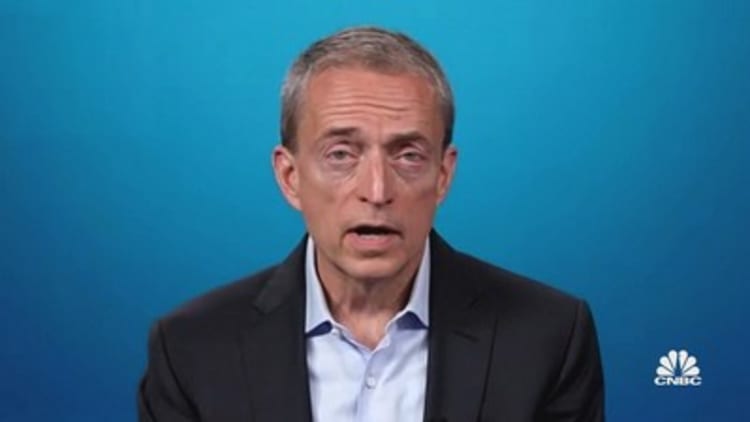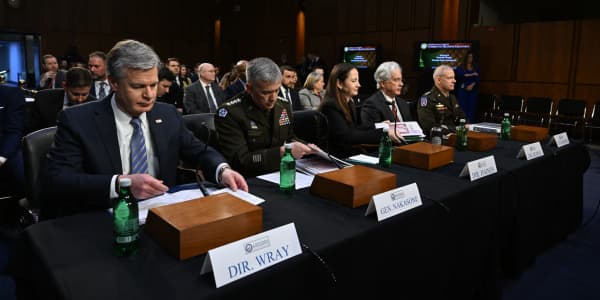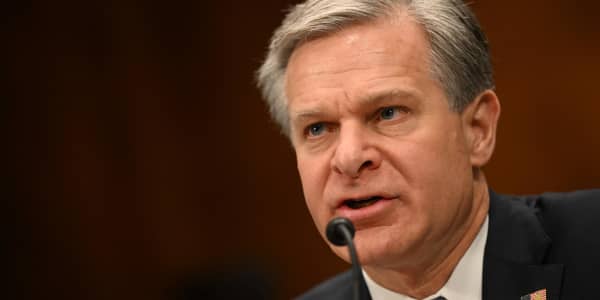Just a few decades ago, the U.S. was a global leader in semiconductors, producing upwards of 40% of the world's supply after having invented the technology.
But as semiconductors became more important, the U.S.'s hold on that market has dwindled, now just producing 10% of the global chip supply and none of the bleeding edge semiconductors that are powering the next generation of AI, smartphones, and mobile devices.
That's where the bipartisan $52.7 billion CHIPS Act comes in, with a goal of having the U.S. compete once again with countries like South Korea and Taiwan in semiconductors.
"We're in a position now where one of the strategically significant goods for supply chains across the planet is one where we as a country are not in a strong position," Michael Schmidt, director of the CHIPS Program Office, told CNBC CEO Council members in a member-only virtual event on Oct. 10. "The CHIPS Act was a bipartisan recognition that is not an acceptable status quo."
Schmidt, who previously served as a senior advisor at the Treasury Department, is overseeing how $39 billion of the funds set aside by the legislation will be allocated toward manufacturing centers. He called the bill an opportunity for the U.S. to catch up.
"We as a country have to be prepared to make those investments and really use the funding we have as start-up capital, to build an ecosystem with enough scale and enough significance to build our workforce and supplier base to create an environment where ongoing investment in the semiconductor industry is attractive for the future," he said.
CEO Council members on the virtual meeting raised several of the challenges that lie ahead for these projects, which perhaps most importantly include finding capable workers. Schmidt noted that the U.S. government's focus on semiconductors has helped raise visibility and encourage college students towards semiconductor manufacturing as opposed to other tech jobs. He added that the continued success of American companies like Nvidia, Qualcomm, and AMD also helps. There is also funding from the CHIPS Act earmarked for worker development.
However, as now more than a year has passed since President Joe Biden signed the CHIPS Act into law, many in the U.S. semiconductor industry are waiting for that money to flow into it. While the potential for federal funding has spurred some potential huge investments in the semiconductor sector — in total, $231 billion has been announced in private sector semiconductor investments in the United States, according to the White House — many of those projects are contingent on receiving federal government aid.
"Moving the wheels of government is not always easy," Schmidt said. "But I think in many respects, we've moved so fast that our private sector counterparts and partners have had to keep pace with us and catch up."
Schmidt said the office is actively working with applicants and is "looking forward to announcing some major progress in the months ahead," telling CNBC's Morgan Brennan that "this is not your normal government program where you get the applications in, you close the doors while you read it, and then maybe a few months later you come out with the white smoke that says whether or not you're going to get funding — this is a highly iterative, commercial, interactive experience."
Schmidt assured CEOs that the funding will not be at risk if there is a change in the White House after the 2024 election.
"We have a lot of support on both sides of the aisle because this is fundamentally a national security initiative," Schmidt said. "My team isn't made up of political appointees. This operation will continue into the next term and for many years after that."
He stressed that the government's focus on rebuilding this sector is long-term in nature.
"After this program's money has been spent, I want the United States to continue to be a place where the leading companies in the world view it as in their core business interests to continue making large-scale investments," he said. "This is a global industry and will remain a global industry and that's a good thing, but we want the United States to be a core part of their business models."






